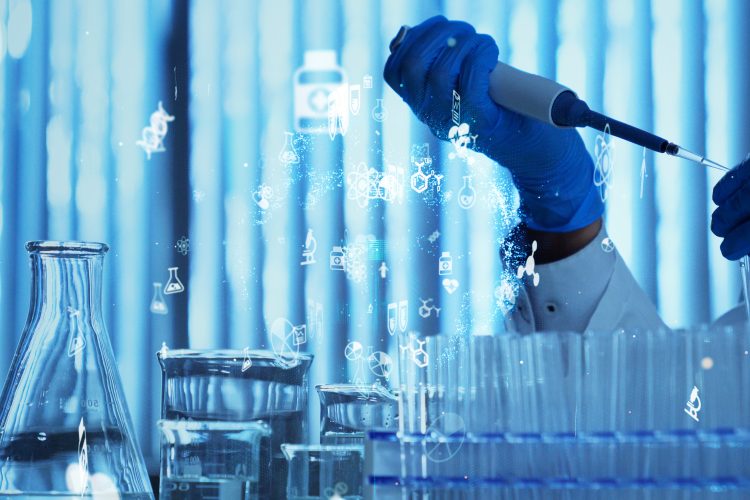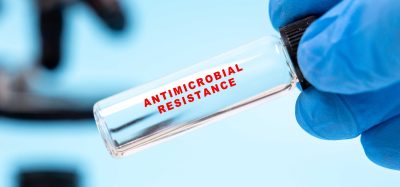Fixing failed drugs: AI solutions for toxicity in drug discovery – part 1
Posted: 14 July 2025 | Dr Raminderpal Singh (Hitchhikers AI and 20/15 Visioneers) | No comments yet
Why do so many drug candidates fail before reaching patients – and can AI help stop the losses? In Part 1, Layla Hosseini-Gerami of Ignota Labs outlines the scope of the toxicity problem and explains why failures often come too late to fix.


The pharmaceutical industry faces a persistent challenge: despite significant investments in drug development, a substantial proportion of promising candidates fail due to unforeseen toxicity issues. In a recent conversation with Layla Hosseini-Gerami, Chief Data Science Officer and Co-founder of Ignota Labs, we explored this critical issue, considering how artificial intelligence (AI) and advanced data science approaches may provide solutions.
Ignota Labs specialises in identifying failed drug candidates, resolving their issues and turning them around before selling them back to pharmaceutical companies. As Hosseini-Gerami explains:
“We’re a biotech company that solves the issue of failed drugs by finding failed drugs, fixing them, turning them around and selling them back to Pharma.”
Biomarkers are redefining how precision therapies are discovered, validated and delivered.
This exclusive expert-led report reveals how leading teams are using biomarker science to drive faster insights, cleaner data and more targeted treatments – from discovery to diagnostics.
Inside the report:
- How leading organisations are reshaping strategy with biomarker-led approaches
- Better tools for real-time decision-making – turning complex data into faster insights
- Global standardisation and assay sensitivity – what it takes to scale across networks
Discover how biomarker science is addressing the biggest hurdles in drug discovery, translational research and precision medicine – access your free copy today
With her background in chemistry and AI for drug discovery, Hosseini-Gerami reveals that she developed a particular interest in “the use of data science and machine learning methods for drug discovery and how to make the best impact with the data that we have.” Her professional mission – which she half-jokingly suggests could be worthy of a Nobel Prize – focuses on “solving safety issues in drug discovery, [to solve] the toxicity fallout in drug discovery.”
The scale and impact of the toxicity challenge
According to Hosseini-Gerami’s research, approximately 56 percent of drug candidates fail due to safety problems, representing an enormous waste of scientific effort, investment capital and – most importantly – potential treatments for patients.
She explains that the human impact of these failures extends beyond financial considerations:
The investors lose confidence, the company can fold; but then ultimately it means that the patients they’re trying to treat don’t have the treatment that they need.
“The investors lose confidence, the company can fold; but then ultimately it means that the patients they’re trying to treat don’t have the treatment that they need.”
This frustrates Hosseini-Gerami, who considers these failures to be preventable: “I see this as a real shame and something that I think AI has the opportunity to really make a difference in. It could make a paradigm shift in how we’re viewing these safety failures and what we can do to try and revive them.”
She emphasises the sad loss of scientific potential: “So much good science has gone into them, and it’s just such a shame for that to go to waste.”
The critical timing problem in toxicity detection
Toxicity issues typically emerge during preclinical animal studies – a particularly devastating time for discovery programmes. By this point, companies have invested heavily in their assets but have not yet reached human trials.
Hosseini-Gerami outlines the typical timeline: “That will really start to bear in the preclinical studies… at that point, the company has done some safety screening, like secondary pharmacology panels that can be screened to essentially see if you’re hitting any off targets that are known to have a relationship with adverse events.”
When that data comes through for the company, it means the end of the road, and the company needs to wind down because the investors need to make sure that they get their money back.
However, these screenings are insufficient: “The issue with that is it’s very incomplete; you can’t test everything in vitro,” she points out. And the limitations of these panels are significant. “The collection of flags is incomplete because there are so many different ways in which toxicity can manifest, says Hosseini-Gerami. “And in measuring a small panel of say 10 off targets, you’re not gonna be able to catch it all.”
Furthermore, when toxicity appears in animal studies, the readouts provide confirmation of problems without guidance for solutions:
“The readouts that you’re getting at the preclinical stage are things like: the rat had raised ALT and AST and some liver necrosis. And that information is obviously very valuable because it tells you that there is something wrong, but it doesn’t tell you what to do next.”
The consequences of these findings are severe, particularly for biotech companies. As Hosseini-Gerami reveals, “When that data comes through for the company, it means the end of the road, and the company needs to wind down because the investors need to make sure that they get their money back.”
The incentive problem: why toxicity testing comes too late
A key insight from the conversation addresses why toxicity isn’t evaluated earlier in drug discovery. Hosseini-Gerami identifies a fundamental misalignment of incentives in the biotech ecosystem:
“There isn’t really an incentive for the company to have a look at these things earlier in terms of the potential for investment into their asset and being able to have the money they need to progress it where it needs to go.”
Early-stage biotech companies are primarily focused on demonstrating efficacy to secure funding: “At that stage, what their investors are looking for is efficacy data.” Hosseini-Gerami notes that the situation differs somewhat between biotech startups and large pharmaceutical companies: “It’s a bit different in Pharma; they do have the ability to look at some of these things earlier.”
The current funding environment exacerbates the problem: “Because the funding situation is so difficult, and that risk–reward appetite has changed slightly, it’s becoming more likely that it will be a death sentence for that company if they have that finding rather than an opportunity for the company to rethink.”


Dr Layla Hosseini-Gerami bridges the worlds of chemistry, biology and AI in her role as Chief Data Science Officer at Ignota Labs. She has an undergraduate and masters degree in chemistry, winning Outstanding Graduate of the Year and was a finalist in the prestigious Salters awards. She then went on to earn a PhD at the University of Cambridge under the mentorship of Andreas Bender, a renowned figure in AI drug discovery. There she pioneered integrative cheminformatics and bioinformatics strategies for understanding drug molecular mechanisms, winning the Chemistry Theory Outstanding Thesis Award in 2023. She also produced several publications in collaboration with Eli Lilly, leading industry translation of her academic research. At Ignota Labs she has built upon these sophisticated methods to understand the mechanisms of drug toxicity and how to mitigate them. Her goal is to leverage AI not just to understand, but also to prevent adverse drug reactions, ensuring safer therapeutic options for patients.
Related topics
Analysis, Artificial Intelligence, Bioinformatics, Computational techniques, Drug Discovery, Drug Discovery Processes, In Vitro, In Vivo, Machine learning, Pharmacology, Therapeutics, Toxicology
Related organisations
Hitchhikers AI and 20/15 Visioneers, Ignota Labs








